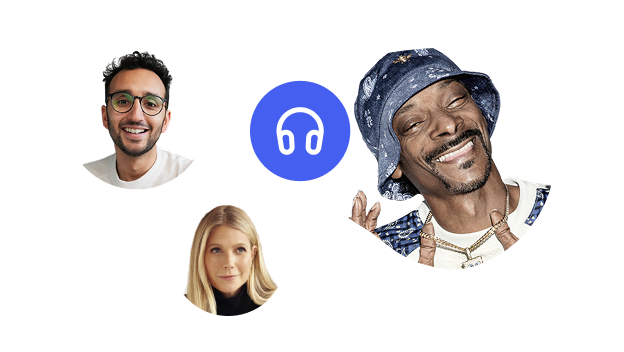Text to speech vs screen reader. What’s the difference?
Given the wide range of technology available today, “how do I read my screen aloud” is now a question that has more than one answer. While the two terms are often used interchangeably, text-to-speech software and a screen reader are two different applications – each with its unique benefits and drawbacks. Both are speech synthesis applications that can be installed on an operating system to convert text on a digital screen into audio. However, screen reader software and text-to-speech software go about this task in varying ways and offer a differing user experiences. To help you decide which technology is ideal for your needs, we will explore everything you need to know about text-to-speech vs screen readers, including how the two technologies compare and contrast, the unique functions and features that they offer, and the best apps available today in each category.
What is a Screen Reader?
A screen reader application is an app that converts text on a computer screen into either audio or braille so that people who are visually impaired can use a computer. Since screen readers are designed specifically to read screens for visually impaired users on Windows or Chrome, they tend to offer a lot more features than standard text-to-speech software. For one, screen reader users who are visually impaired require assistance navigating from page to page along with assistance reading the text on those pages, and screen readers are designed to serve these needs. With accessibility being their top priority, screen readers enable users to jump from different sections of text and navigate using keyboard commands. For users who have a refreshable braille display hooked up to their computer monitors, and don’t need a cursor, a screen reader will be able to convert digital text into either braille or audio. Lastly, screen readers are able to read any alternative text for images or alt text that is present on a web page or document, enabling visually impaired users to access audio descriptions of images, graphs, and other visual elements.
Screen Reader Use Cases
Since screen readers are specifically designed to serve the visually impaired, they come equipped with a lot of features the average user doesn’t need. However, that’s not to say that screen readers aren’t highly valuable to the demographic that they serve. Given how important computers and the internet have become in almost every aspect of modern existence, those who are visually impaired must be still able to access the same privileges. When doing a tutorial, TalkBack is a useful assistive technology that helps if you have impairments, and have a way to get braille output. By enabling visually impaired users to easily use a computer without the need to see its screen, screen reader software plays a vital role in promoting accessibility and equity for the disabled community.
Popular Screen Reader Apps
Some of the most popular screen readers on the market today include:
- NVDA
- JAWS
- VoiceOver
- Narrator
These work if you use web browsers to read web content on Chrome, Microsoft, Firefox, or open-source devices.
Cons of Screen Readers
Screen readers are a godsend for those who are visually impaired. For everyone else, though, screen readers present a few key drawbacks that make text-to-speech software a better choice for the average user. This includes drawbacks such as:
- Cost – Given that screen reader software is much more sophisticated than text-to-speech software, it’s no surprise that it costs more as well. If you want to purchase a screen reader application, expect to spend anywhere from a few hundred to a few thousand dollars.
- Complexity – Screen reader software comes equipped with a lot of complex features and requires a bit of a learning curve to master. Unless you need all of those extra features, they’re only going to get in the way.
- Accessibility – If a website isn’t designed with accessibility in mind, a screen reader might not be able to read and navigate it. If you have disabilities, formatting can make your TTS reader less effective. For example, if a website fails to include alt attributes with its images, a screen reader will have no way to describe those images to its user. While websites are getting better and better at designing for accessibility, you are still likely to run into issues using a screen reader on some websites.
What is Text-to-Speech Software?
As the name suggests, text-to-speech software uses a speech synthesizer to convert digital text into clear, easy-to-understand audio. With text-to-speech software, you can synthesize text on any web page or document and have that text read aloud from top to bottom. Unlike a screen reader, text-to-speech software is not designed specifically for visually impaired users, or people with dyslexia, and therefore does not include all of the features these users need to use a computer. Instead, text-to-speech software is designed for the average user who wants to boost their productivity and reduce eye fatigue by listening to text rather than reading it on their Android devices.
Text-to-Speech Software Use Cases
There are several good reasons why someone would use text-to-speech software even if they have no problem reading written text. For one, text-to-speech software enables you to boost your productivity by listening to documents at the same time you perform other tasks; reading and multitasking aren’t always so easy, but listening to text while you are driving to work, cooking dinner, or cleaning the house is much more feasible. Some people are also able to listen faster than they can read and can thus improve their productivity even further by using a text-to-speech application. The second key use case for text-to-speech software is preventing eye fatigue. We spend an awful lot of time these days staring at a screen during both work and leisure, and this can lead to several problems. Headaches, dry eyes, muscle spasms, difficulty focusing, and blurred vision are just a few of the symptoms of eye fatigue. By enabling you to read the text without having to look at your screen, though, text-to-speech software helps prevent this increasingly common problem. The final reason why text-to-speech software is so popular is the fact that many people simply prefer to listen to text rather than read it. If you find that you comprehend spoken information better or simply enjoy having someone else read to you more than reading yourself, text-to-speech software may be a great product for you.
Popular Text-To-Speech Apps
Some of the most popular text-to-speech apps available today include:
- ReadSpeaker
- Natural Reader
- Voice Dream
- Speechify
While there is a lot to like about each of these popular text-to-speech apps, Speechify stands above the completion in terms of both functionality and ease of use. With Speechify, you can synthesize text from any webpage or digital document using either the web app on your PC or the mobile app on your Android or iOS device. Speechify also lets you choose the speed at which text is read and allows you to choose from a large selection of clear, natural-sounding voices.
Cons of Text-to-Speech Software
While text-to-speech software offers a lot of advantages, there are a few drawbacks to consider as well, including:
- Comprehension – Some people process information they hear better than information they read, but this isn’t true for everyone. Another factor to consider is the fact that utilizing text-to-speech software means that you won’t see the spelling and grammar of the documents you read, making it harder to learn these rules yourself if that is something you hope to accomplish from reading.
- Cost – Text-to-speech software is much more affordable than a screen reader. However, the best text-to-speech apps still cost money, while simply reading text for yourself is free.
- Tone – Even the best text-to-speech software cannot possibly hope to capture the exact tone of everything it reads when it is converting text to audio one word at a time. While the best apps such as Speechify feature pleasant, natural-sounding voices, they still can’t replicate the intended tone of the text they are reading in the same way as a live narrator.
{HTML TABLE GOES HERE}
Frequently Asked Questions
Is text-to-speech the same as screen reader?
All screen readers come equipped with text-to-speech software but also include several other features designed to help visually impaired users navigate their digital devices. Text-to-speech software, meanwhile, performs the sole function of reading digital text aloud.
What is considered a screen reader?
Any software designed to help visually impaired users navigate their devices and access digital content falls under the category of screen reader applications.
Why would someone use a screen reader?
Screen readers are used by those who are visually impaired and need help navigating their devices while text-to-speech software can be used by anyone who wants to listen to digital text rather than read it themselves.
Is VoiceOver a screen reader?
Yes, VoiceOver is a popular screen reader application that was built by Apple and comes included with all new Mac computers, iPhones, and iPads.
Can screen readers read PDFs?
Screen readers are capable of reading PDFs as long as the PDFs are accessible.
What is the most popular screen reader?
Some of the most popular screen readers available today include:
- NVDA
- JAWS
- VoiceOver
- Narrator





